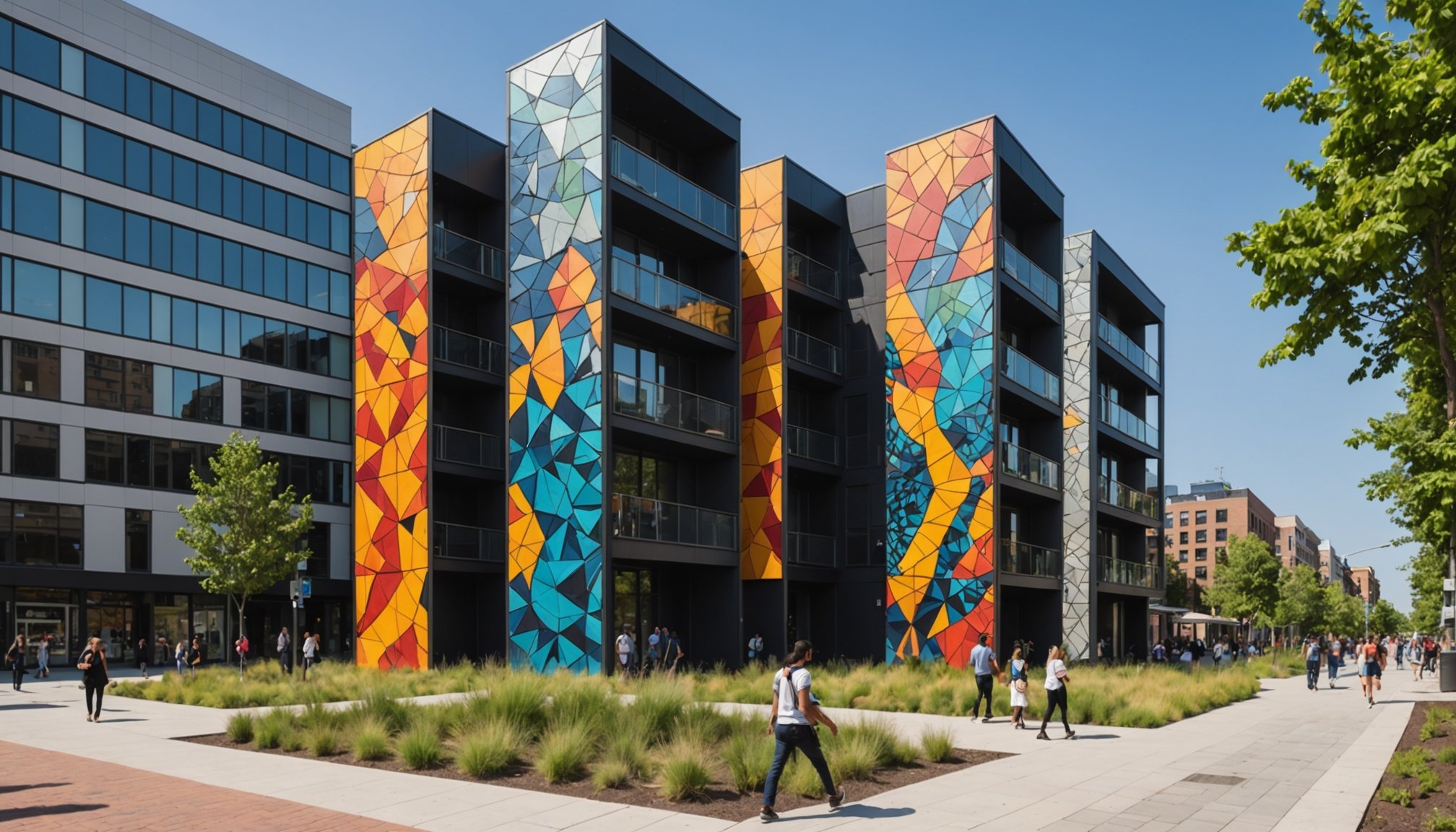Importance of Public Art in Modern Development Projects
Public Art Integration plays a crucial role in modern urban development. It enhances community identity, fosters community engagement, and revitalizes urban areas, paving the way for economic growth. Public art projects can transform spaces by infusing them with creativity and culture, enabling cities to attract tourism and new businesses.
Public art also acts as a powerful tool for urban revitalization, contributing to the rejuvenation of neglected areas and fostering a sense of pride among residents. Its inclusion in development projects can stimulate local economies by drawing visitors and encouraging commercial activities. This process often results in increased property values and investment opportunities.
Community engagement in public art projects is vital for their success. By involving local artists and residents, the projects can reflect the unique cultural heritage of the area, thereby strengthening the community’s identity. Successful case studies highlight that integrating art in development plans not only enhances aesthetic value but also promotes social cohesion and economic prosperity. Engaging residents through workshops and allowing them to participate in the selection and creation of art fosters a deeper connection to their surroundings, enriching their experience of their environment.
Creative Strategies for Integrating Public Art
Integrating public art into urban landscapes requires artistic collaboration and thoughtful design. By collaborating with artists early in the process, planners can ensure that artworks are both innovative and reflective of community values. This interdisciplinary approach balances creative expression with community needs, making art accessible and relevant.
This might interest you : Toward Carbon-Free Living: Navigating Challenges for Zero-Emission Homes in Northern UK
Interdisciplinary Collaboration
Involving artists during the initial stages of urban planning enhances creative outcomes. Partnerships with local art organizations can lead to murals, sculptures, and installations harmoniously integrated into public spaces. Such collaborations require understanding both artistic ambitions and community desires, ensuring that the art aligns with local culture and identity.
Innovative Design Approaches
Tech-driven art and interactive installations can capture public interest, offering dynamic experiences and extending art’s reach beyond traditional barriers. Temporary installations test ideas and gather feedback, refining future permanent projects. These designs encourage public interaction and engagement, breathing new life into urban areas.
Community-Driven Art Projects
Involving residents directly in artistic endeavors, perhaps through workshops, fortifies local bonds and highlights community identity. By selecting projects that emphasize local artists and cultural heritage, planners nurture a sense of ownership and pride. This approach not only beautifies spaces but also strengthens social cohesiveness.
Case Studies of Successful Public Art Integration
Examining noteworthy success stories of public art integration offers valuable insights into its transformative impact. In Massachusetts, the Kendall Square project showcases how curated art installations stimulate community involvement and enhance urban spaces. This project’s success stems from an inclusive process involving stakeholders, community members, and artists, ensuring artwork resonance with local identity and history.
In the United Kingdom, London’s Fourth Plinth project exemplifies the dynamic nature of rotating artworks in public spaces. Each installation is temporary, inviting public discourse and engagement, which keeps the square a vibrant, culturally enriched hub. This approach has created a continually refreshed space, acting as a catalyst for both cultural dialogue and tourism.
These project examples illustrate significant social and economic benefits. They boost local economies by attracting visitors and businesses, while socially, they foster a sense of community pride and ownership. From these cases, key lessons learned include the importance of ongoing dialogue with residents and the flexibility to adapt projects to community feedback. Art’s impact extends beyond aesthetics, playing a vital role in enriching both community life and urban landscapes.
Practical Tips for Implementation
Integrating public art into urban settings requires meticulous planning and execution. Here are some best practices to ensure successful art projects:
Developing a Public Art Master Plan
Establishing a clear Public Art Master Plan is essential. This plan should define goals such as enhancing community identity and achieving economic growth. Evaluate potential sites carefully, considering accessibility and visibility to ensure engagement. It’s crucial to create a realistic timeline and budget that account for both initial art installations and long-term maintenance.
Securing Funding and Resources
Acquiring sufficient funding is pivotal. Identify potential sponsors early, such as local businesses or art-supportive organisations. Exploring public-private partnerships can mitigate costs and increase resources. Additionally, crowd-funding enables community engagement, allowing residents to contribute financially and feel invested in the project’s success.
Ensuring Sustainability and Maintenance
For art projects to remain impactful, develop strategies that ensure ongoing vibrancy. This includes organising a community stewardship program to foster resident involvement in caretaking. Incorporating environmental considerations in creation can reduce maintenance costs and promote sustainability. Besides preserving aesthetics, this approach nurtures a lasting connection between art, the environment, and the community.






